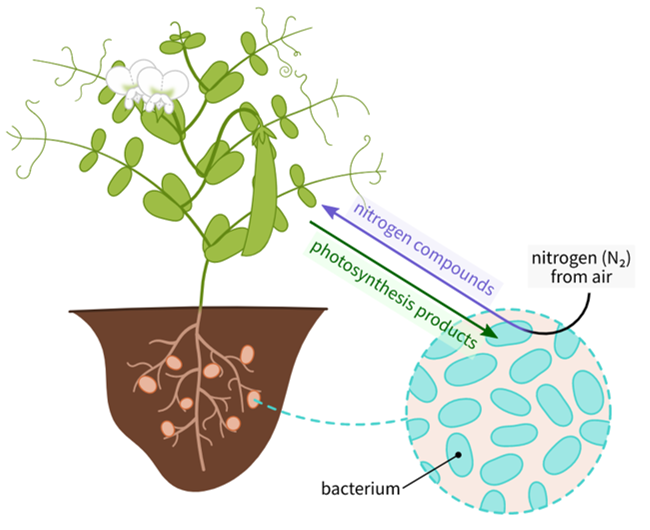Crop plants that fix most or (often) all of their N requirements by BNF include peas, beans (both Vicia & Phaseolus), clovers, lucerne (alfalfa), and lupins. Amounts of N fixed often exceed the legume's needs so rotations, companion crops and crop mixtures with non-leguminous crops are commonly employed within cropping systems.
Rhizobium species are specific to legume species, and may not be native in some soils, so BNF by some legumes may require their inoculation with suitable Rhizobium strains.
Research over many years has sought to introduce BNF into non-leguminous crop species, thereby overcoming or reducing their need for fertiliser N. Some BNF supports commercial sugar cane cropping, but the benefits of BNF to other crops remain minimal.




